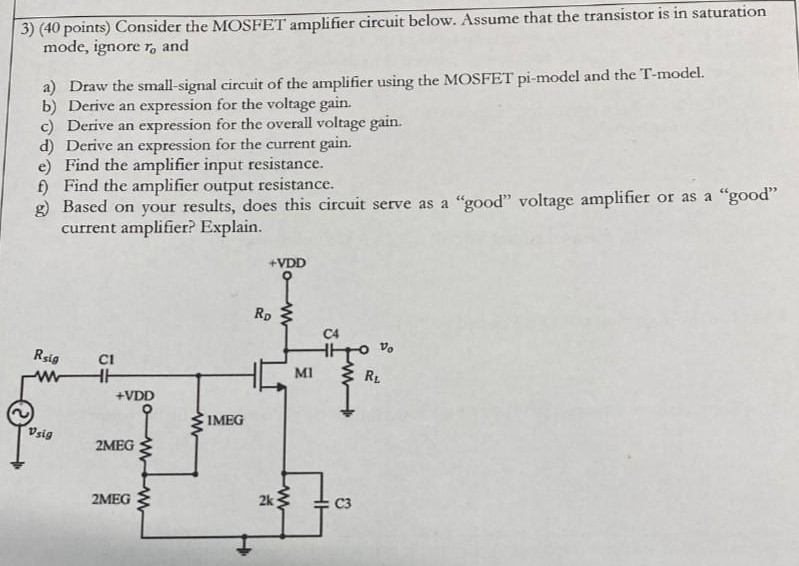Consider the MOSFET amplifier circuit below. Assume that the transistor is in saturation mode, ignore ro and a) Draw the small-signal circuit of the amplifier using the MOSFET pi-model and the T-model. b) Derive an expression for the voltage gain. c) Derive an expression for the overall voltage gain. d) Derive an expression for the current gain. e) Find the amplifier input resistance. f) Find the amplifier output resistance. g) Based on your results, does this circuit serve as a "good" voltage amplifier or as a "good" current amplifier? Explain.
